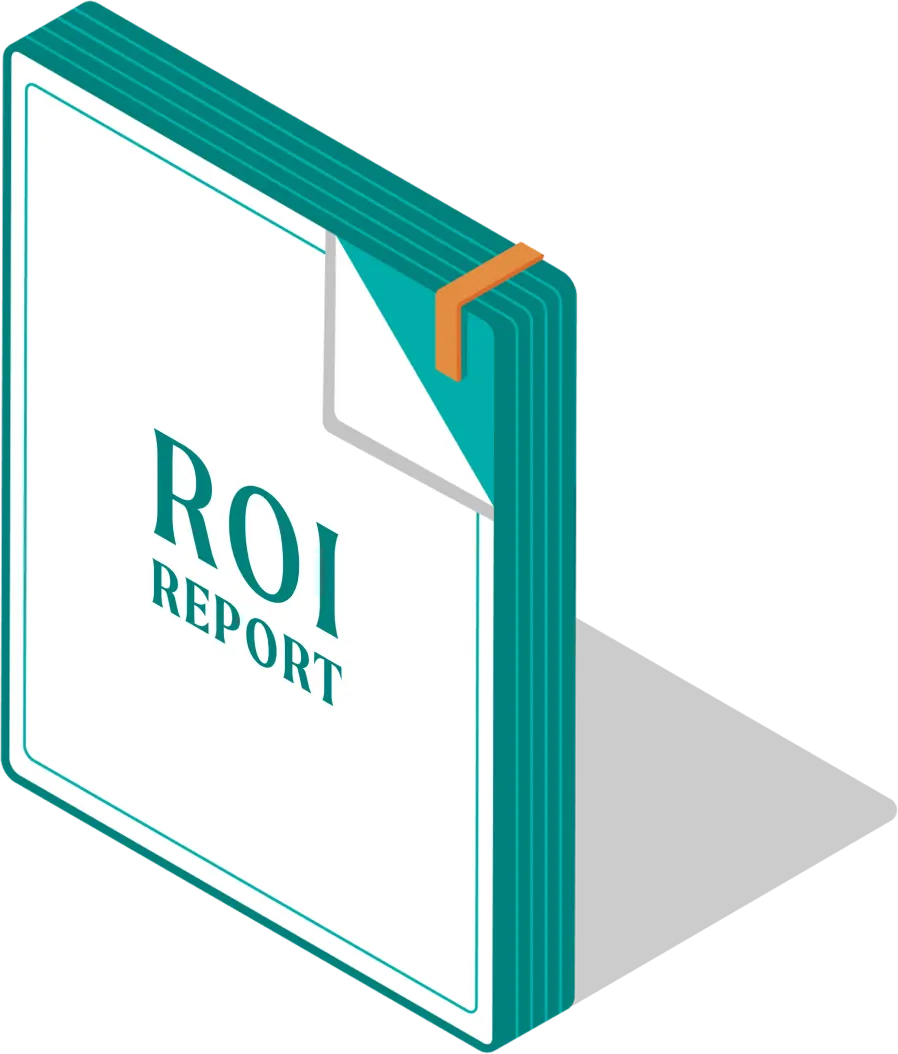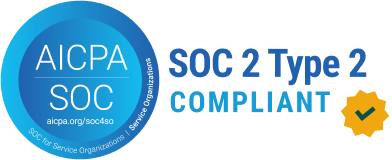The ROI of major donor cultivation communications
A comparative analysis of traditional vs. digital engagement.
51%
Average Cost Savings
Average reduction when replacing printed proposals with digital experiences.
70%
Time Reduction
Reduction in staff hours required per proposal by eliminating manual bottlenecks.
$15M
Attributed Gift
Documented gift attributed directly to a digital proposal's analytics.
Executive summary
This report presents a comprehensive financial and strategic analysis comparing two fundamentally different models for executing major donor cultivation: the traditional, print-based communications strategy and the modern, digital-first approach enabled by the Ovrture platform.
Critical Context
The foundational work of developing a campaign’s core rationale, theme, and case for support is a significant, model-agnostic investment requiring $75,000 to over $125,000 before any donor-facing materials are created.
This analysis focuses on what happens after this shared investment: the execution phases where the two models diverge dramatically in cost, efficiency, and strategic capability.
Key findings:
- Traditional Model: $268 to $551 per personalized print proposal with 5.25–11 hours of staff time
- Digital Model: $83 to $183 per personalized digital experience requiring only 0.5–3.5 hours
- Cost Savings: 51% average reduction when replacing printed proposals with digital experiences
- ROI Impact: Traditional programs require $2.1M in gifts for 10:1 ROI; digital requires only $473K
- Attribution: Digital platform closes the “measurement gap” with analytics that enable attributable ROI, including a documented $15M gift
The strategic calculus of the major gift proposal
Major gift fundraising is the financial engine of nonprofit sustainability. At the heart of this high-stakes process lies a critical instrument: the personalized major gift proposal—the "last mile" of a long cultivation journey.
Traditional Excellence
For decades, the “white-glove” print-based package has been the standard. High-quality print communicates professionalism and respect, with longer “shelf life” in donors’ offices.
These qualitative benefits are real and have long justified the significant investment required
Modern Challenge
Today’s donors expect personalized, immediate, and data-informed interactions in every aspect of their lives. The question is how to achieve both professionalism and modernity simultaneously.
The execution method determines cost, return, and capacity to build a scalable growth engine
The shared foundation
Before any personalized proposal can be created, organizations must invest in architecting the core philanthropic argument:
Agency-Led Development
$105k–$175k
Plus 100 hours of in-house staff time for expert-facilitated strategy and creative platform development
In-House Development
360–560 hours
Accounting for senior staff time ($28k–$50k salary cost, not including opportunity cost)
The point of divergence
From static collateral to dynamic content
Traditional: arsenal of print collateral
The "Collateral Catch-22"
Development teams require modular print collateral (folders, unit-level cases, fact sheets). Each new piece costs:
Obsolescence Risk
To be cost-effective, materials must be printed in high volumes. But printing specific details (budgets, timelines, leadership names) creates obsolescence risk.
15–25%
Annual waste of printed inventory—a rarely tracked hidden cost.
Digital: dynamic content ecosystem
The "Digital Advantage Paradigm"
Platform investment establishes a permanent institutional capability with zero marginal content costs:
Obsolescence Risk
Digital content modules can be created, updated, and reused infinitely at zero marginal cost. Single edits propagate instantly across all active sites.
Eliminated
Content transforms from a depreciating physical asset to an appreciating digital asset.
The last mile: proposal creation workflow
Where operational differences have the most profound impact
Crafting the Personalized Proposal
Traditional method
Complex, multi-stage project that is inherently linear and prone to friction: 2.0–4.0 hours for MGO to draft cover letter and select components; 1.5–3.0 hours to source data from other departments (frequent bottleneck); 0.75–1.5 hours for physical printing and assembly; 1.0–2.5 hours for sequential multi-stakeholder review—primary source of delay.
Digital method using Ovrture
Re-engineered for parallel processing and efficiency: CRM integration auto-populates donor data; MGOs create sites from pre-approved templates in minutes; Core work involves selecting content modules and crafting personalized messaging; Simultaneous review by multiple stakeholders dramatically reduces approval timelines.
Delivery & Distribution
Traditional method
Print package sent via premium overnight courier (FedEx/UPS). High per-unit shipping costs. No delivery confirmation of actual review by donor.
Digital method using Ovrture
Unique, secure URL generated for each donor. Links distributed via email in under two hours for entire cohort. Instant delivery with read receipts and engagement tracking.
Post-Delivery Intelligence
Traditional method
No empirical data on impact. MGO follow-up based on hope and speculation, often beginning with “Did you receive the package?” Organization cannot learn from efforts—next proposal created with same lack of insight.
Digital method using Ovrture
Real-time analytics dashboard shows who opened sites, time spent viewing, specific content engaged with, and return visits. Session recordings and heat maps provide deeper understanding. MGO tailors follow-up with precision: “I noticed you spent time reviewing the architectural renderings…”
Total cost of investment
All-in cost per personalized proposal
Traditional method
$268–$551
per personalized proposal
(5.25–11.0 hrs)
(FedEx/UPS)
Digital method using Ovrture
$83–$183
per personalized digital experience
(0.5–3.5 hrs)
(amortized)
Cost Savings (Average):
51%
When replacing print proposals with digital experiencesCost savings breakdown
70%
Reduction in staff hours required per proposal
100%
Elimination of printing and shipping costs
0%
Material obsolescence risk (vs. 15-25% annual waste)
Interactive annual program cost calculator
Model your solicitation program economics
Annual solicitation volume:
Traditional program cost
$143,500
Total annual investment
$1,578,500
Revenue required for 10:1 ROI
Digital program cost using Ovrture
$43,050
Total annual investment
$473,550
Revenue required for 10:1 ROI
Annual program savings:
$100,450
Total cost reduction
70.0%
Percentage savings
The quality of return: speculative vs. attributable ROI
Beyond the numbers, a fundamental difference exists in the ability to measure the return each model generates.
Speculative ROI
Any ROI calculated for a print-based program is fundamentally a measure of the "overall solicitation effort's efficiency," not the specific effectiveness of the materials themselves.
The Measurement Gap
A seven-figure gift following proposal delivery cannot be definitively attributed to the proposal’s influence. Impact cannot be isolated from other factors.
ROI relies on correlation, not provable causation
Attributable ROI
Comprehensive donor-specific analytics create a clear line of sight between a donor's engagement with their proposal and their subsequent giving decisions.
Data-Driven Attribution
Organizations can correlate specific engagement patterns with philanthropic outcomes, transforming ROI from speculative to defensible.
Evidence-based foundation for strategic planning
From operational drag to strategic enablement
The hidden costs and benefits that don't appear on balance sheets
Traditional: system of constraints
- Operational Drag & Bottlenecks: 1,837-3,850 staff hours for 350 proposals. Systemic bottlenecks reduce “solicitation velocity.”
- Inability to Scale at Speed: Manual process doesn’t scale during campaigns. Must hire more staff or rush (and degrade) quality.
- Material Dependency & Inflexibility: Print is static. Locked-in details lead to obsolescence waste and outdated information.
Digital: system of enablement
- Elimination of Bottlenecks: Parallel processing for review, CRM integration, and batch processing (250+ sites at once).
- Power of Infinite Iteration: A/B testing to determine most effective approaches. Instant updates create a “learning loop” impossible with print.
- Building Institutional Intelligence: Every interaction captured. Comprehensive knowledge base transcends individual staff.
Executive synthesis: a new framework for investment
The choice facing modern fundraising leaders is not about the initial strategic investment—which is a shared necessity—but about the execution model that follows. This decision has profound and lasting consequences for cost, efficiency, scalability, and institutional intelligence.
All-In Cost Per Proposal
32–69% cost savings range (Traditional: $268–$551 vs Digital: $83–$183).
Annual Program Economics
$1.6M+ lower revenue threshold for 10:1 ROI (Traditional: $2.1M vs Digital: $473K).
Measurement Capability
Digital provides attributable ROI vs. traditional's speculative ROI.
Documented Impact
Digital platform enabled attribution of a $15M gift and 5x improvement in donor response rates.
The true choice:
Legacy execution system
High operational friction, speculative ROI, systemic constraints on scalability, and an inability to generate actionable intelligence.
Modern growth engine
Low operational friction, attributable ROI, scalable capacity, and a continuous stream of actionable intelligence.
Strategic questions for modern fundraising leaders
A framework for making data-informed decisions in an evolving philanthropic landscape.
Measurement & Insight
How can our organization close its "measurement gap" to gain real, data-driven insight into which messages and funding priorities resonate most deeply with our top prospects?
Efficiency & Scalability
Is our current proposal creation process a scalable engine for growth that can accelerate during a campaign's public phase, or is it a systemic bottleneck?
Resource Allocation
Given the significant investment in time and money our current process requires, are we confident it represents the highest and best use of our resources?
Donor Experience
In a world where donors expect personalized, immediate, and data-informed digital interactions, does our current proposal package align with their expectations?
Strategic Agility
How can our organization build a communications system that allows us to adapt messaging in real time to evolving campaign realities?
From cost center to growth engine
High-touch, personalized solicitation is essential to sophisticated, long-term development strategy. The digital platform model transforms the major gift proposal from a static, expensive package into a dynamic, cost-effective, and continuous engine for growth.
51%
Average Cost Savings
70%
Time Reduction
$15M
Attributed Gift
Ready to drive similar outcomes?
Get immediate access to see the quantifiable financial impact of digital-first cultivation.
Want to discuss how Ovrture can transform your major donor cultivation program? Contact us at sales@ovrture.com

References & methodology
Primary Data Source: Ovrture Platform Operational Data & Client Implementation Intelligence (2017–2025). This analysis draws on eight years of proprietary data including documented client workflows, time-tracking data from implementations, post-implementation surveys, and direct observation of traditional cultivation processes during discovery and migration phases.
Industry Data Sources: Campaign consultant pricing research from Capital Campaign Pro and Mission Advancement, case for support development costs from The Angeletti Group and CCS Fundraising, nonprofit salary benchmarks from Salary.com and ZipRecruiter (2025), and digital fundraising trends from AFP Global and Chronicle of Philanthropy.
Cost estimates, labor hour allocations, and efficiency comparisons represent aggregated patterns across client institutions. Client-specific success metrics have been independently verified and represent documented, attributable outcomes.
